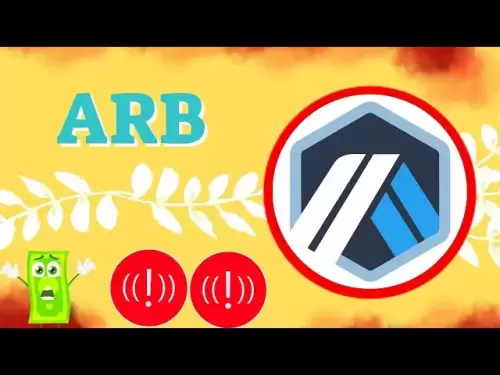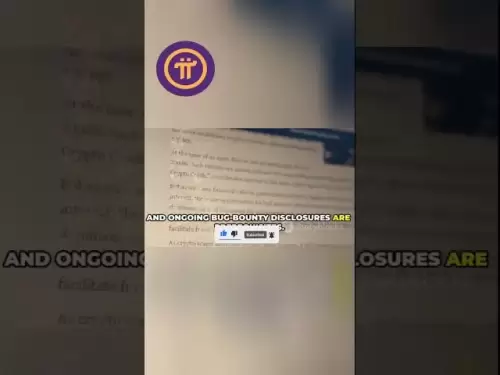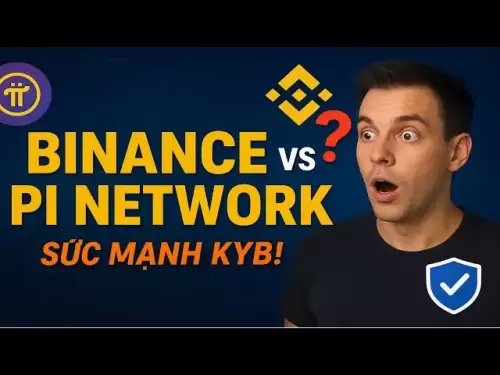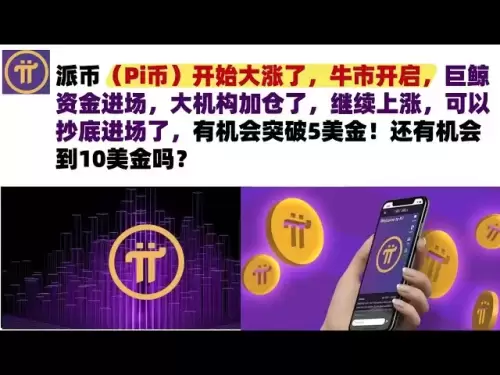 |
|
 |
|
 |
|
 |
|
 |
|
 |
|
 |
|
 |
|
 |
|
 |
|
 |
|
 |
|
 |
|
 |
|
 |
|
Cryptocurrency News Articles
Why TradFi is using Ethereum L2s to tokenize trillions of dollars in real-world assets
May 21, 2025 at 10:30 pm
Shortly before Ethereum's shock 50% price surge earlier this month, when bearishness about its roadmap was reaching its zenith
Shortly before Ethereum's shock 50% price surge earlier this month, when bearishness about its roadmap was reaching its zenith, Real Vision founder Raoul Pal was asked on a podcast if he thought Ethereum was cooked.
The former Goldman Sachs executive said he'd heard that narrative a lot, but it was wrong — not least because TradFi considers Ethereum to be the "Microsoft" of blockchain.
"It clearly works very well for what the financial markets need," Pal said.
"If the finance system comes, they'll go there. There'll be stablecoins and SOL and SUI and all of this stuff — but is Goldman going to build in Solana? Highly unlikely. Is JPMorgan? Highly unlikely. And will they build their own Layer 2s? Highly likely."
The growing awareness that TradFi has already tokenized billions worth of US Treasurys and commodities in the Ethereum ecosystem was cited by Bernstein analysts as a big factor in ETH's recent price recovery.
And TradFi has plans to tokenize billions — if not trillions more — of real-world assets (RWAs) using custom-built L2s.
The biggest tokenization firm in the world, Securitize, is collaborating with DeFi protocol Ethena to build an RWA-focused L2 called Converge. Alibaba affiliate Ant Digital has just announced its own RWA-focused rollup called Jovay, and last week, Robinhood bought WonderFi, which has just launched the Wonder L2 as part of ZKsync's Elastic chain network. The Bernstein analysts suggested the L2 may become Robinhood's new tokenized stock trading platform.
Converge and Ethena founder Guy Young tells Magazine that institutions believe Ethereum is the most censorship-resistant and secure base layer for settlement, and its appeal is only enhanced by a sophisticated DeFi ecosystem of protocols like Aave and Pendle. Ethereum L2s offer the chance to make these protocols more suitable for TradFi requirements.
"It's hard to imagine an alternative layer 1 coming close to gaining the trust of issuers at scale," Young says. "When Converge launches, those financial primitives and apps will have permissioned versions where institutions can deploy assets in a regulatory-friendly manner, and that's a key differentiator that could see L2’s gain more market share of RWA’s."
As Young suggests, Ethereum's base layer is the undisputed leader for RWAs, accounting for 58% of the total $22.6 billion tokenized real-world assets. But surprisingly enough, in second place is zero-knowledge proof L2 ZKsync Era with $2.19 billion. That's more than 8x the value of the entire ZKsync market cap.
Why TradFi is using Ethereum L2s for RWAs
So what are the advantages for using Ethereum L2s for RWAs over competing L1s like Stellar, Aptos and Solana? And why are TradFi firms using a scaling solution widely derided by Ethereum's critics as a mistake?
Although L2s aren't as uncallable or decentralized as Ethereum itself, they are relatively cheap to spin up and can be easily configured to comply with privacy and regulatory requirements. They also generate revenue via sequencer fees, and can theoretically enable speeds of 100,000 TPS or more — though only MegaETH on testnet has demonstrated anything within sight of that throughput to date.
While ZKsync is focused on scaling this year with a view to making the sequencer capable of 10,000 TPS by the end of the year, it has been subject to criticism on social media recently for lagging retail user numbers. But clearly, ZKsync's tech holds appeal for big names in finance.
Tradable has tokenized a couple of billion dollars worth of private credit on zkSync Era, UBS has piloted a gold tokenization project there, and both Fidelity and Sygnum use the chain. Blockchain Capital is also an investor in ZKsync, and Securitize's private securities tokenization platform operates on zkSync Era.
Deutsche Bank has also used ZKsync's tech to build its own rollup called the Memento ZK Chain Project, which is a core component in Singapore's massive Project Guardian tokenization effort.
"We've been more effective on Enterprize than they have been," says ZKsync Foundation director Marco Cora, referring to other L2s like Base, Optimism and Arbitrum. "We have been less effective on consumer — but we totally want to be more effective there."
Cora explains that L2s are faster and cheaper and they can also offer the ability to keep transactions private — which has been a key impediment to institutions adopting blockchain to date. Companies that create their own L2s in the ZKsync Elastic Network can elect to store their data in a company-
Disclaimer:info@kdj.com
The information provided is not trading advice. kdj.com does not assume any responsibility for any investments made based on the information provided in this article. Cryptocurrencies are highly volatile and it is highly recommended that you invest with caution after thorough research!
If you believe that the content used on this website infringes your copyright, please contact us immediately (info@kdj.com) and we will delete it promptly.
-

-

- Ethereum Price, ETH Tokens, Rally Prediction: Is a New All-Time High In Sight?
- Aug 10, 2025 at 08:00 am
- Ethereum's price is surging, leading to speculation about a new all-time high. This article explores the factors driving the rally, potential risks, and alternative Ethereum-based tokens to watch.
-

-

-

-

-

-

-





























































